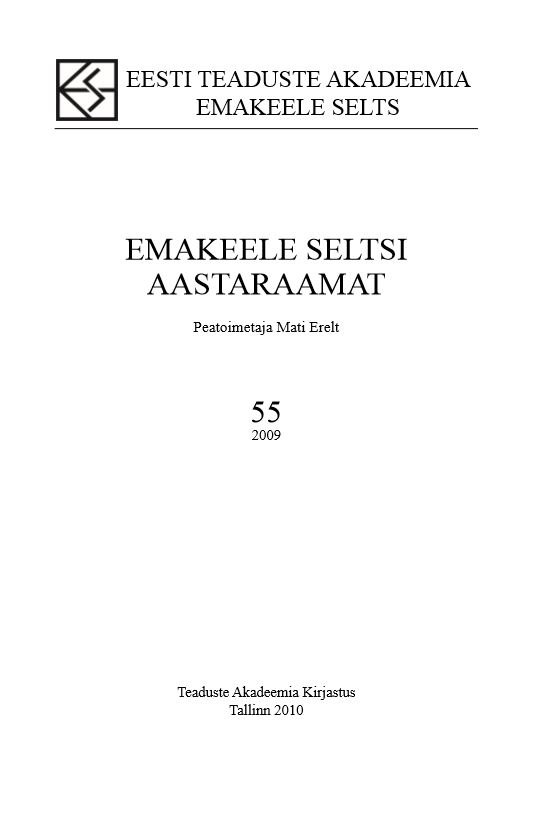Lausesemantikast üldkeeleteaduse ja eesti keele kontekstis
On sentence semantics in the context of general linguistics and the Estonian language
Author(s): Piia Taremaa, Heili Orav, Haldur ÕimSubject(s): Language and Literature Studies
Published by: Teaduste Akadeemia Kirjastus
Keywords: sentence semantics; frames; semantic roles; inferences; ontology; semantic domains; motion domain
Summary/Abstract: The paper deals with some problems of sentence semantics – how to describe and represent the meaning of sentences (and, thus, the meaning of coherent texts) – which we have encountered in the process of analysing the Estonian language data, but which could also be of general theoretical interest. Frames are used as means of representing semantic structures. In a frame the relevant components are the head unit – the predicate of the sentence in our case – and its arguments in certain semantic roles. The possible roles and the semantic requirements for the entities fi lling these roles are determined by the predicate. One has to emphasize that in this sense frames do not anymore constitute structures representing sentences as syntactic units but semantic units derived from sentences (texts), such as events, activities, processes, etc. More precisely, we are dealing with the following three problems. First, the concept of the semantic role and the possible relationships or dependencies between the semantic roles in a frame (i.e. in the representation of an event, etc), second, deriving inferences from a sentence as part of constructing its ‘full’ meaning in the context and, accordingly, formulating these inferences in the frame, and third, possibilities to fi x the borderline between the description of ‘pure’ linguistic meaning of an expression (such as sentence) and the description of its meaning when taking into account the relevant ontological (world) knowledge.
Journal: Emakeele Seltsi aastaraamat
- Issue Year: 2009
- Issue No: 55
- Page Range: 201-224
- Page Count: 24
- Language: Estonian

